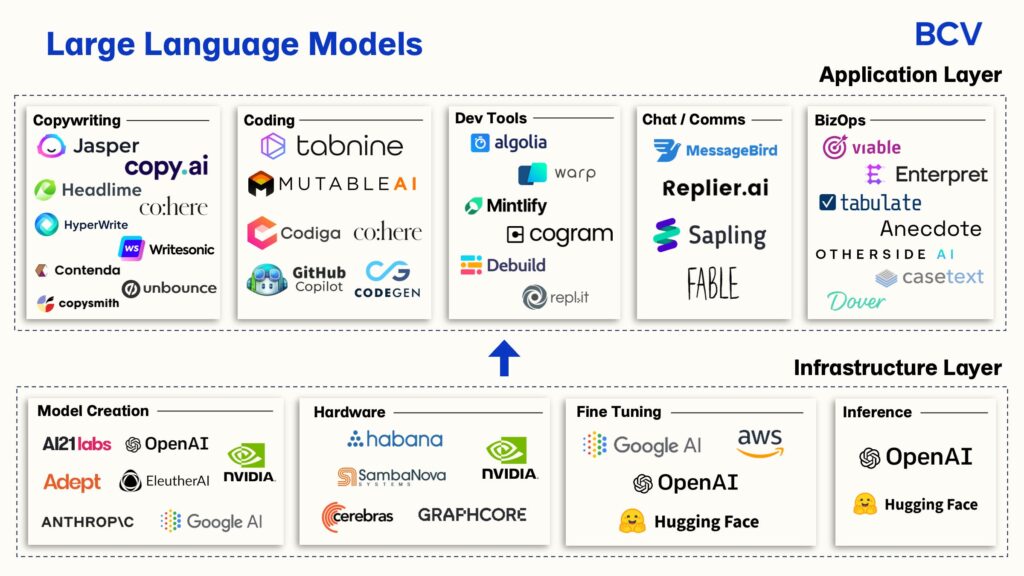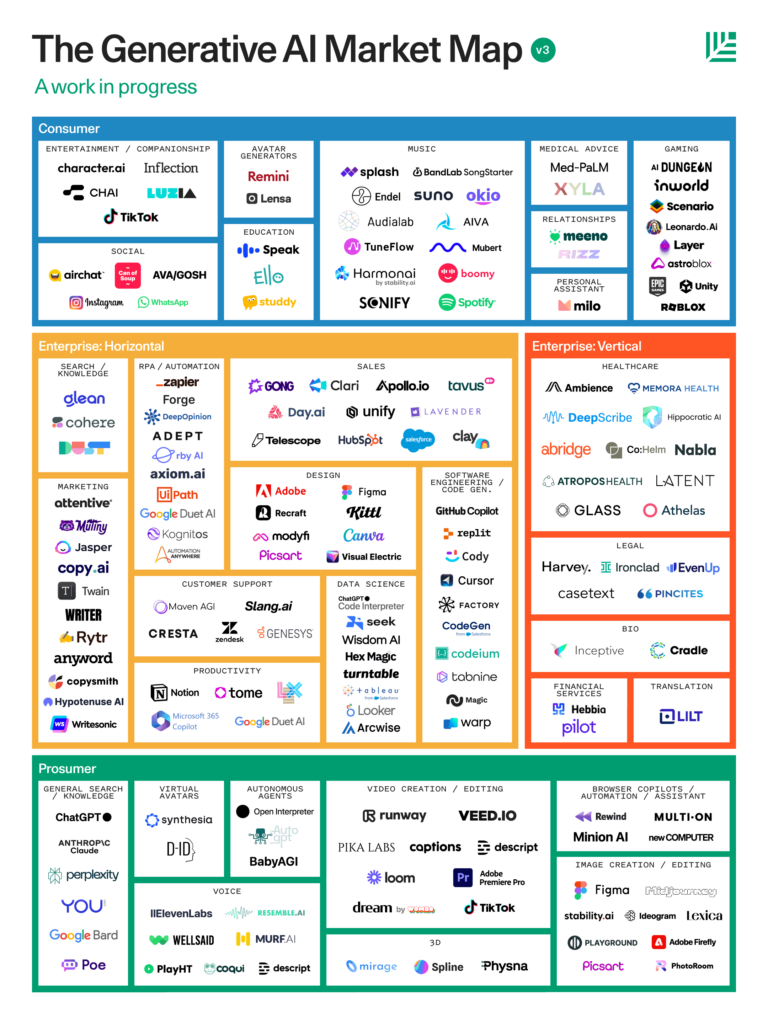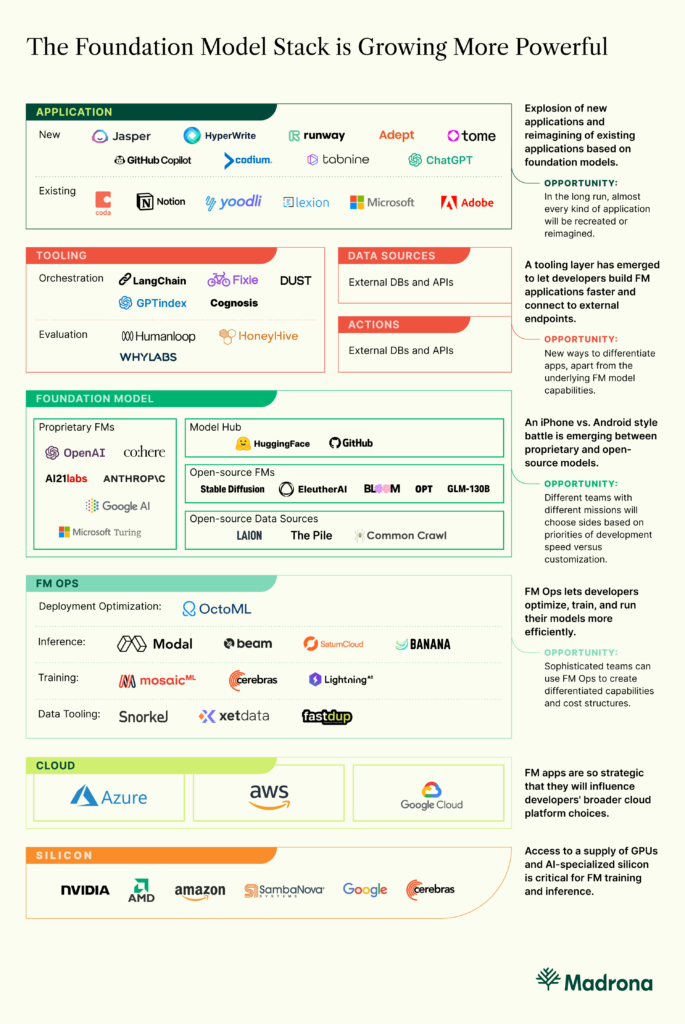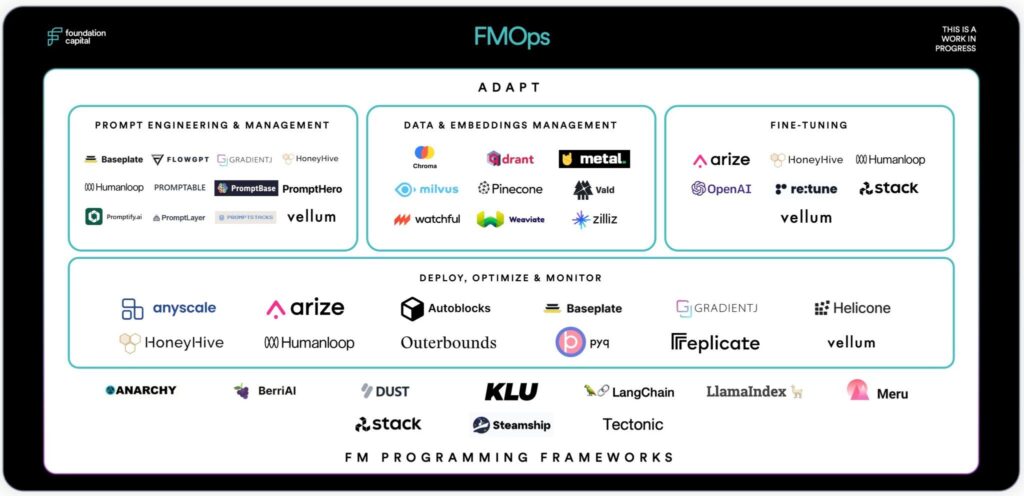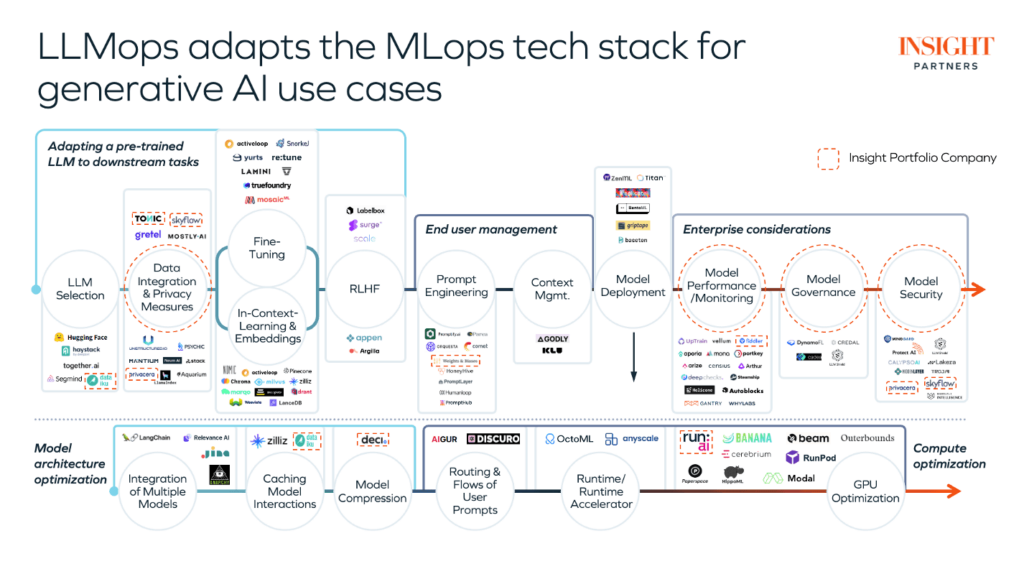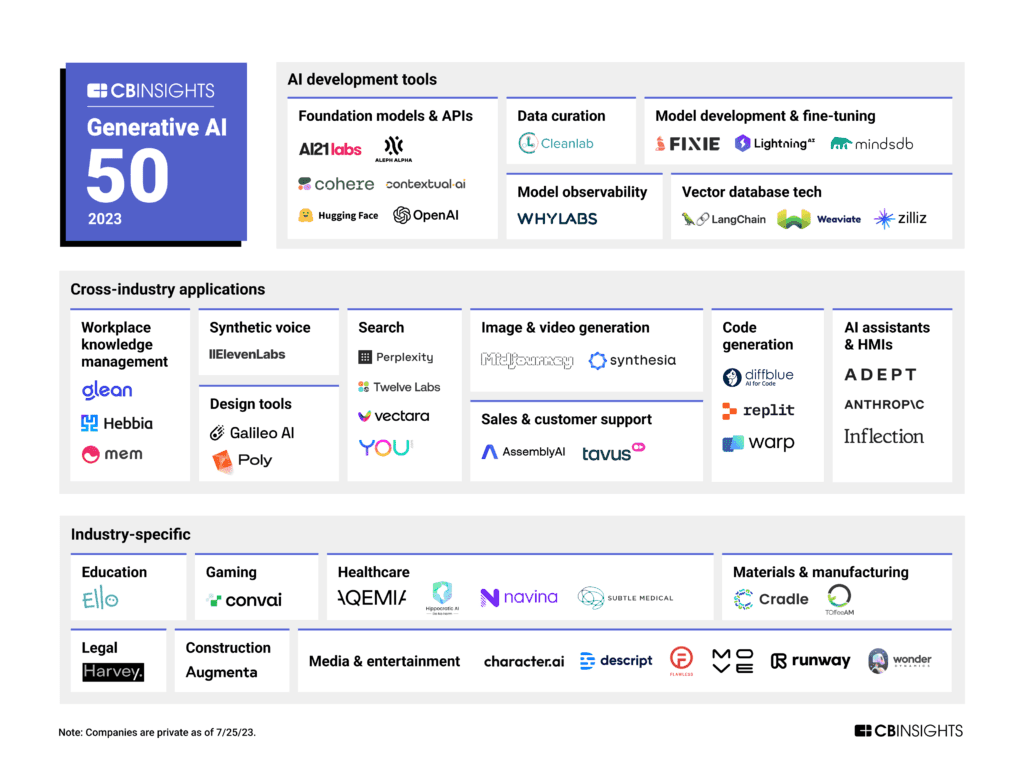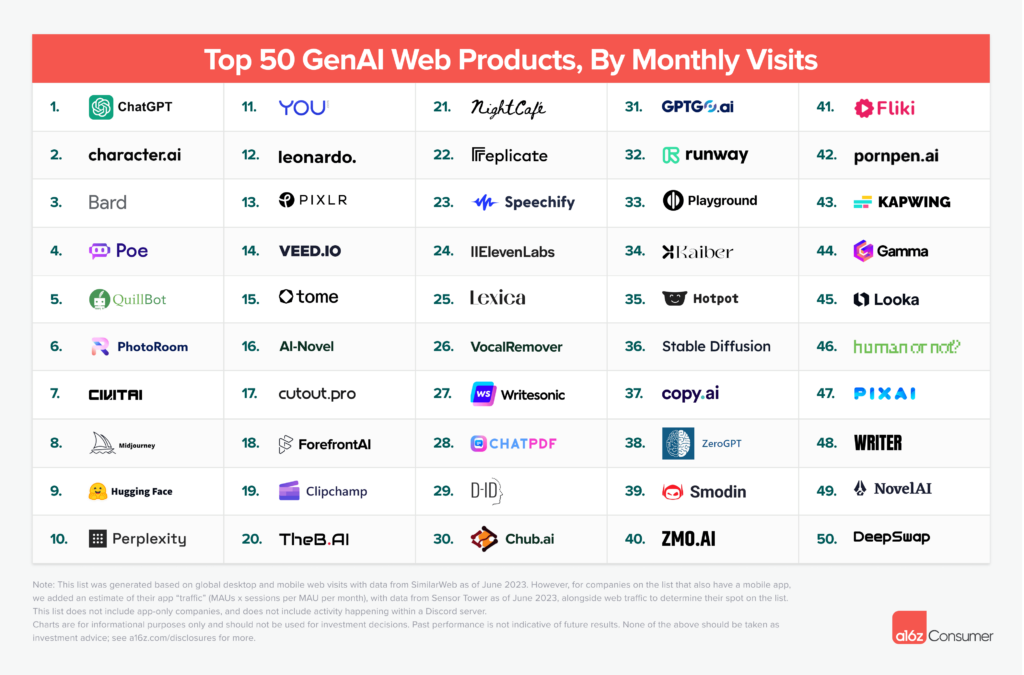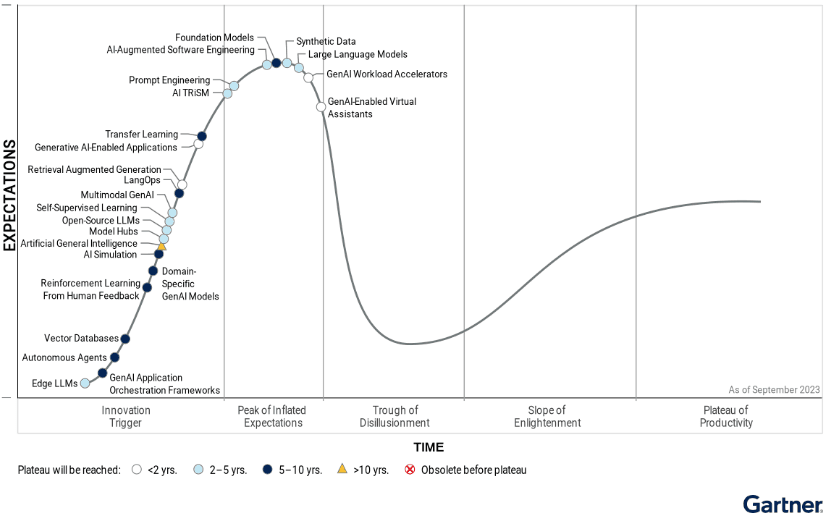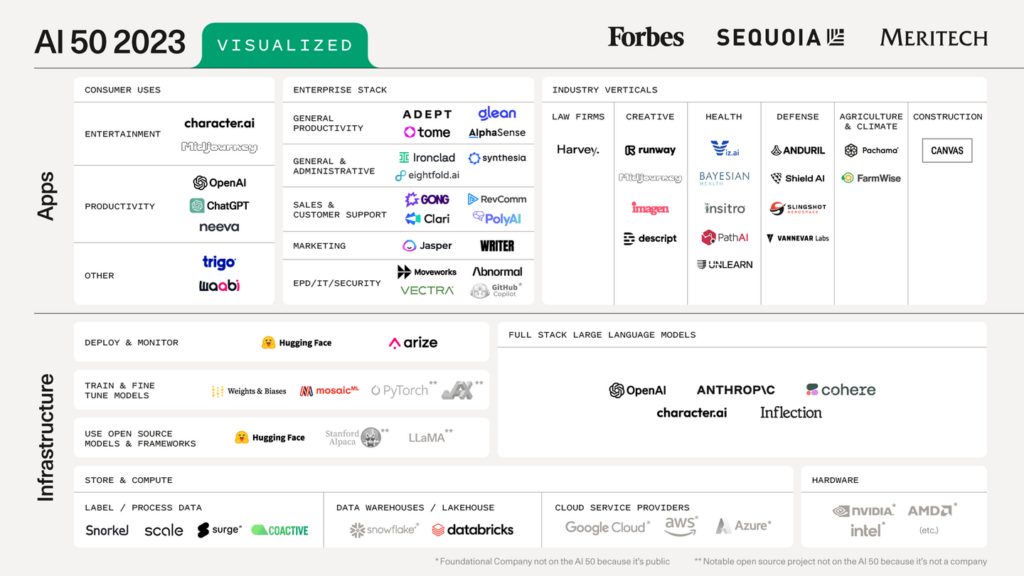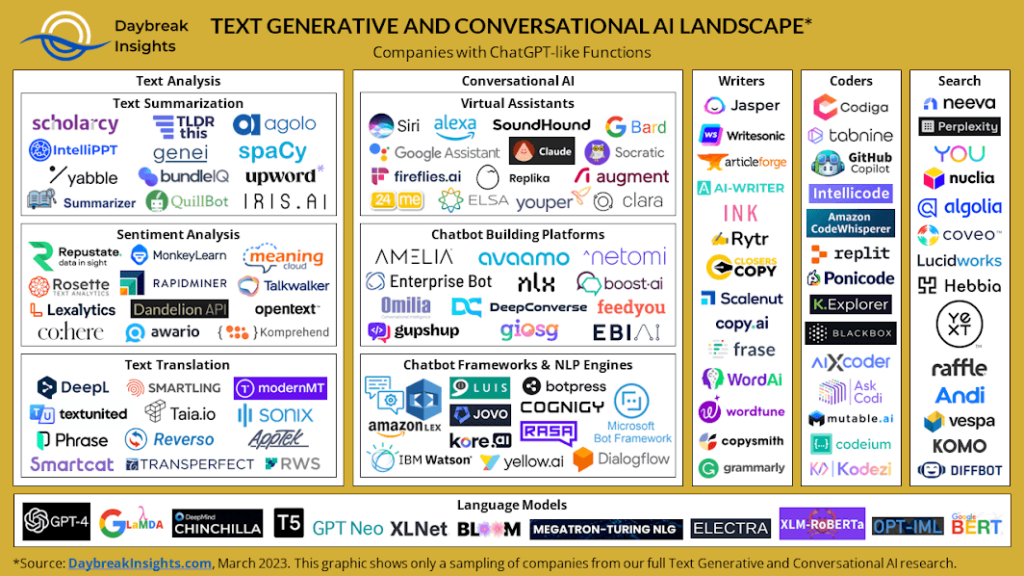The burgeoning field of generative AI is rapidly transforming how industries operate, innovate, and create. At the heart of this technological revolution are foundational models and generative algorithms, capable of generating text, images, music, and more with unprecedented sophistication. To navigate this complex and fast-evolving landscape, it’s essential to understand the key players and their roles in shaping the future of AI.
In this context, visual representations such as “Foundation Model Stack,” “Generative Model Index,” “Generative AI Market Map,” and “Generative AI Industry Landscape” play a crucial role. These diagrams serve as comprehensive guides, categorizing and showcasing various companies and organizations pivotal to the generative AI industry. By grouping entities based on their industry focus, technological specializations, or market impact, these stacks offer a clear and organized perspective on the diverse ecosystem.
From startups pioneering novel algorithms to tech giants scaling AI applications, these visual maps encapsulate the breadth and depth of the industry. Whether you’re an investor, entrepreneur, researcher, or enthusiast, understanding these stacks is crucial for grasping the current state and future potential of generative AI. In the following sections, we’ll delve into each category of the stack, exploring the key companies and their contributions to this dynamic field.
We analyzed dozens of industry landscape diagrams. We chose some of the best work done by venture capitalists and analysts who cover this industry day in and day out.
Venture Capital View
Bain Capital
The article discusses the transformative impact of large language models (LLMs) on B2B software. It highlights the rapid progress of natural language processing and the increasing sophistication of LLMs. The piece emphasizes the potential of open-source models, like BLOOM, to democratize the space. It notes the high costs of designing LLMs, suggesting dominance by major players like OpenAI and Google, but also predicts a surge in startups leveraging LLMs for diverse applications, from marketing to coding. Drawing parallels with the evolution of computer vision, the article foresees LLMs revolutionizing enterprise software, making it more intelligent and intuitive.
Sequoia
The central thesis of the article is that generative AI represents a significant shift in technology, likened to a modern space race, enabled by decades of technological progress. Key companies mentioned include ChatGPT, Midjourney, and Character, highlighting their success in the market. The article discusses the immense market potential of generative AI, surpassing $1 billion in startup revenue faster than SaaS did, but also notes the unsustainable nature of the current AI ecosystem’s excitement and growth. In conclusion, the article emphasizes a shift from initial novelty applications to more customer-centric solutions in “Act 2” of generative AI, focusing on solving human problems end-to-end and creating real value and comprehensive product experiences. Sequoia maintains a strong belief in generative AI’s future, applying patience and judgment in investment decisions while focusing on companies that effectively address the value problem.
Madrona
The article from Madrona posits that although foundation models in AI are rapidly evolving, offering vast potential for innovation, the pace isn’t quick enough to fully exploit these models. Key entities like OpenAI, co:here, AI21, Google, and various open-source projects are highlighted. The future market potential lies in building innovative applications, differentiation, and tool development, with significant opportunities identified for founders. The conclusion stresses the need for accelerated innovation in foundation models, calling for collaborative efforts from diverse sectors to advance technology while ethically managing its impact.
Foundation capital
The central thesis of the article from Foundation Capital is the transformative potential of foundation models, like GPT-4, in revolutionizing software applications. These models significantly reduce the time, technical knowledge, and cost required to develop AI-enhanced products. The article emphasizes the emergence of Foundation Model Ops (FMOps), a set of tools enabling the transition from foundation models to full-fledged AI applications. It details three key areas: Adaptation tools to customize foundation models, bundled solutions for deployment, optimization, and monitoring, and programming frameworks to orchestrate these processes. Companies mentioned include OpenAI, Google, Arize, HoneyHive, and Vellum. The article sees immense future market potential in this space, as these tools facilitate a paradigm shift in AI application development. The conclusion highlights the opportunities for startups and infrastructure-minded entrepreneurs in this rapidly evolving field.
Read article Read article Read article
Scale VC
The article from Scale Venture Partners presents a key thesis: the rapid advancement of machine learning, especially in generative AI. This progress is marked by the rise of generative models and accessible foundation models like GPT-3 and Stable Diffusion, which democratize AI technology. It mentions significant players in the field, including companies leveraging these foundation models and Hugging Face in support infrastructure.
The future potential of this market is seen in generative AI’s ability to revolutionize various creative industries, despite the existing hype and skepticism. The article concludes by highlighting the upcoming competitive landscape, questioning how companies utilizing foundation models will differentiate themselves and adapt as technology, such as GPT-4, evolves. This includes considering the role of generative capabilities in forming new companies or integrating into existing applications.
Insight Partners
The central thesis of the Insight Partners article is the distinction between MLops (Machine Learning Operations) and LLMops (Large Language Model Operations), with an emphasis on the unique requirements and tools for implementing generative AI use cases in enterprise settings. Key companies mentioned include Jasper AI, Run:AI, Deci AI, Weights and Biases, Fiddler, SingleStore, Overjet, Iterative Health, ScreenPoint Medical, and Tractable. The article suggests significant future market potential for generative AI, noting the ease of implementing these technologies compared to traditional AI systems. It concludes that existing companies, particularly those in the Insight portfolio, have an early advantage in deploying generative AI over new startups, owing to their established distribution networks, product capabilities, and customer trust.
Analyst View
CB Insights
“GenAI 50: The most promising generative artificial intelligence startups of 2023” is published by CB Insights. The article presents the GenAI 50, a list of the 50 most promising private generative AI companies across the globe. The winners are working on various aspects of AI such as foundation models, code generation, AI assistants, and more. The article discusses industry-specific genAI use cases, cross-industry solutions, and tools to support AI development. It also provides insights into funding and valuation trends of these companies. The selection of these companies was based on various factors including tech novelty and market potential.
Andreeson
This is an article about how consumers are using generative AI. It discusses the different categories of generative AI products and which ones are most popular. It also talks about how these products are being monetized. Some of the important points from this article are that most generative AI products are new and have been built from the ground up, that consumers are willing to pay for these products, and that mobile apps are still a relatively new platform for generative AI.
Gartner Hypecycle
The article titled “Gartner Says More Than 80% of Enterprises Will Have Used Generative AI APIs or Deployed Generative AI-Enabled Applications by 2026” discusses the future of generative artificial intelligence (GenAI) in enterprises. According to Gartner, by 2026, over 80% of enterprises will have used GenAI APIs or models, or deployed GenAI-enabled applications in production environments, a significant increase from less than 5% in 2023. The article highlights that GenAI has become a top priority for the C-suite and has sparked tremendous innovation in new tools beyond foundation models. It also discusses the increasing demand for GenAI in various industries such as healthcare, life sciences, legal, financial services, and the public sector.
Forbes, Sequoia
The Forbes article by Konstantine Buhler discusses the AI 50 list for 2023, highlighting the dominance of generative AI. The companies on the list have collectively received $27.2 billion in funding. Generative AI’s potential is being recognized across various industries. Despite its nascent public availability, experimentation with these tools is already relatively common. The article also notes the investor frenzy in the AI sector.
Daybreak Insights
The article on Daybreak Insights discusses the landscape of Text Generative and Conversational AI, focusing on the capabilities of OpenAI’s ChatGPT. It provides an industry landscape map of companies that fulfill one or more functions provided by ChatGPT. The landscape consists of ten functional categories with representative companies for each category. The article emphasizes the rising popularity of Generative AI, which can create original content1.
